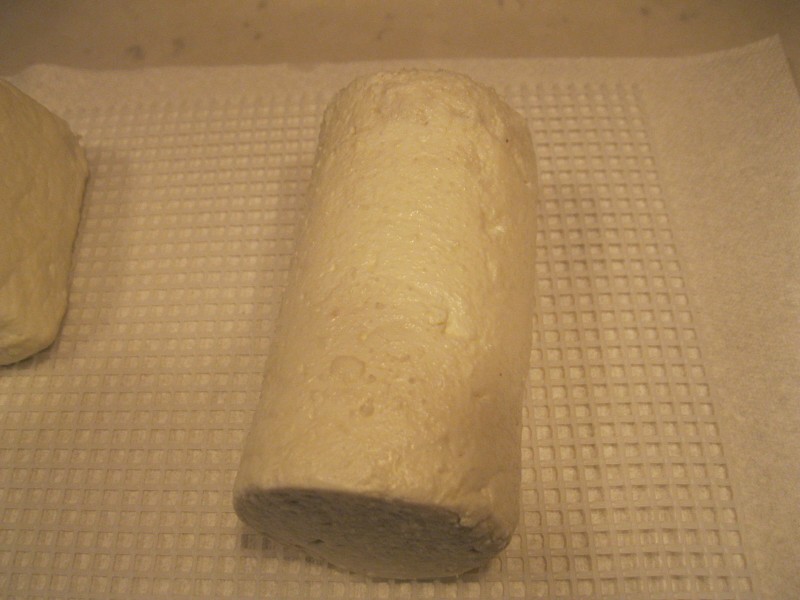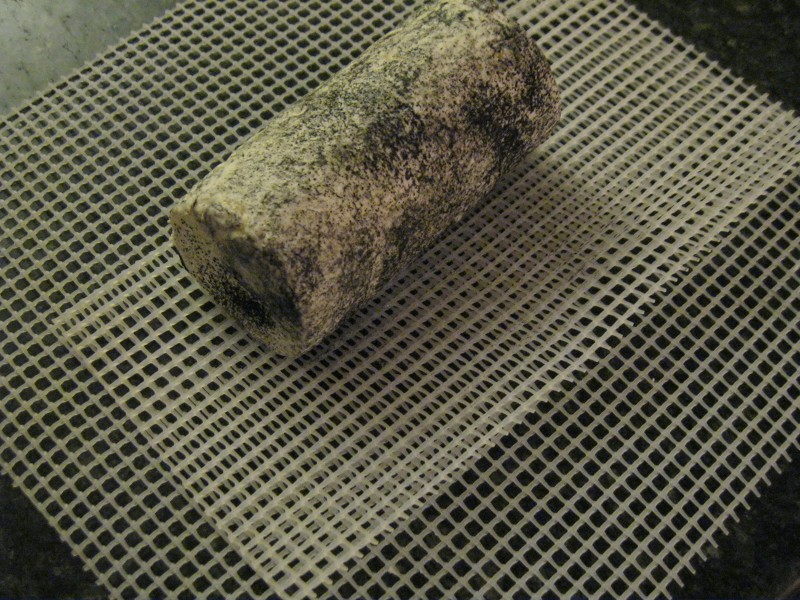



This is a mold-ripened French chèvre cheese to which penicillium candidum was added.
The outside was dusted with vegetable ash.
The ash mellows the cheese's acidity and it promotes a more delectable cheese.
The ash also helps make the cheese
surface more hospitable to the growth of molds thereby adding to the complexity of the overall flavor of the cheese.
The first photo on the left shows the cheese immediately after pressing.
The second photo shows the cheese dusted with vegetable ash.
The third and fourth photos shows the "fur" on the surface of the log.
The "fur" is the penicillium candidum mold growing.
The French call his fur "cat fur", or "poil de chat".
This layer of fur -- actually the blooming of mold spores-- is unique to the bloomy rinded family of cheeses.
Mold grows on the rind of the cheese and mold spores literally bloom, becoming fuzzy and soft, like cat fur.
The penicillium candidum which was added is what causes the growth after the cheese is taken out of the mold,
The cheese must be maintained at an optimum temperature and humidity for the mold to grow.
After the penicillium candidum mold grows for a few days,
the cheese will have a beautiful velvety or "bloomy" rind.
The penicillium candidum mold is what you see in the third photo on the left.
At this point, the cheese is fresh and the texture is relatively firm and flaky.
A wonderful cheese.









































